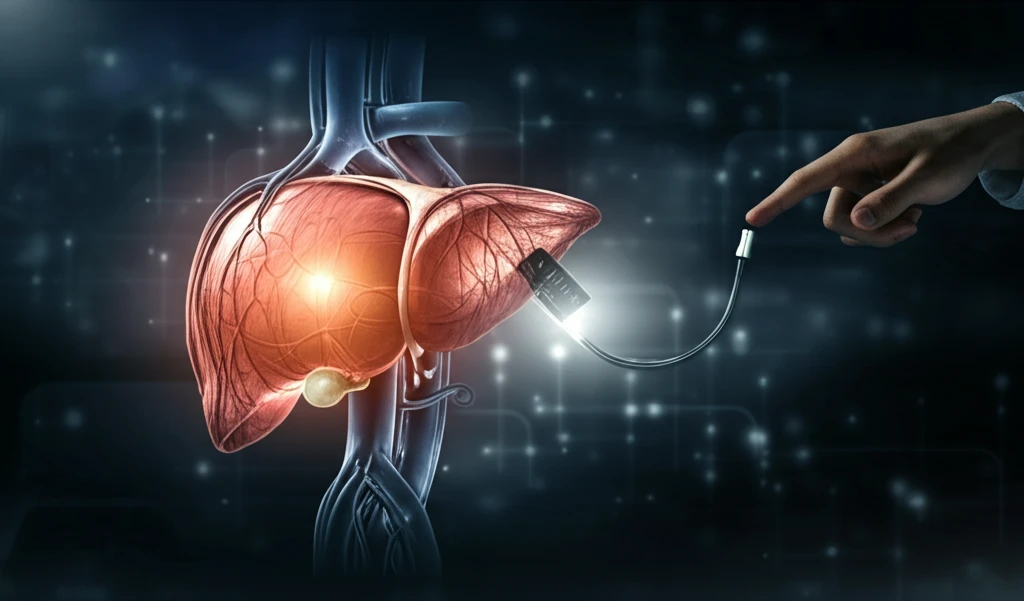
Unlocking Liver Health: A Simple Guide to Portal Pressure Measurement
"Navigate liver disease with our breakdown of indirect portal pressure measurement. Learn how this key diagnostic tool can help manage and monitor your health."
Chronic liver diseases, such as cirrhosis, can lead to portal hypertension, a condition that can cause a range of complications, including ascites, hepatic encephalopathy, and variceal hemorrhage. Fortunately, medical advancements allow for better assessment and management of these conditions.
While noninvasive imaging techniques like ultrasound, MRI, and CT scans are valuable for assessing the liver's structure and identifying abnormalities, measuring portal pressure remains essential. One common method is the hepatic venous pressure gradient (HVPG), often performed alongside a transjugular liver biopsy.
Although rarely used for direct visualization, wedged CO₂ portography plays a crucial role during TIPS (Transjugular Intrahepatic Portosystemic Shunt) procedures. Let's explore the ins and outs of indirect portal pressure measurement and wedged CO₂ portography, offering you a clearer understanding of these important techniques.
Understanding Indirect Portal Pressure Measurement

Historically, direct measurement of portal pressure involved invasive procedures like surgical, percutaneous transhepatic, or transjugular catheterization of the portal vein. However, due to the risks associated with these methods, they were rarely performed. A significant breakthrough came with the development of occlusive hepatic venous catheterization, pioneered by Myers and Taylor and Friedman and Weiner in 1951.
- WHVP: Sinusoidal pressure, reflecting portal venous pressure.
- FHVP: Measured in a nonocclusive position, accounting for intraabdominal pressure.
- HVPG: WHVP minus FHVP, providing a more accurate assessment.
The Future of Liver Health Assessment
Indirect portal pressure measurement has revolutionized our understanding and management of portal hypertension. By providing a reliable and less invasive way to assess portal pressure, techniques like HVPG have become indispensable tools for guiding treatment decisions and improving outcomes for individuals with chronic liver diseases. As research continues, we can expect even more refined methods and a deeper understanding of liver health.
